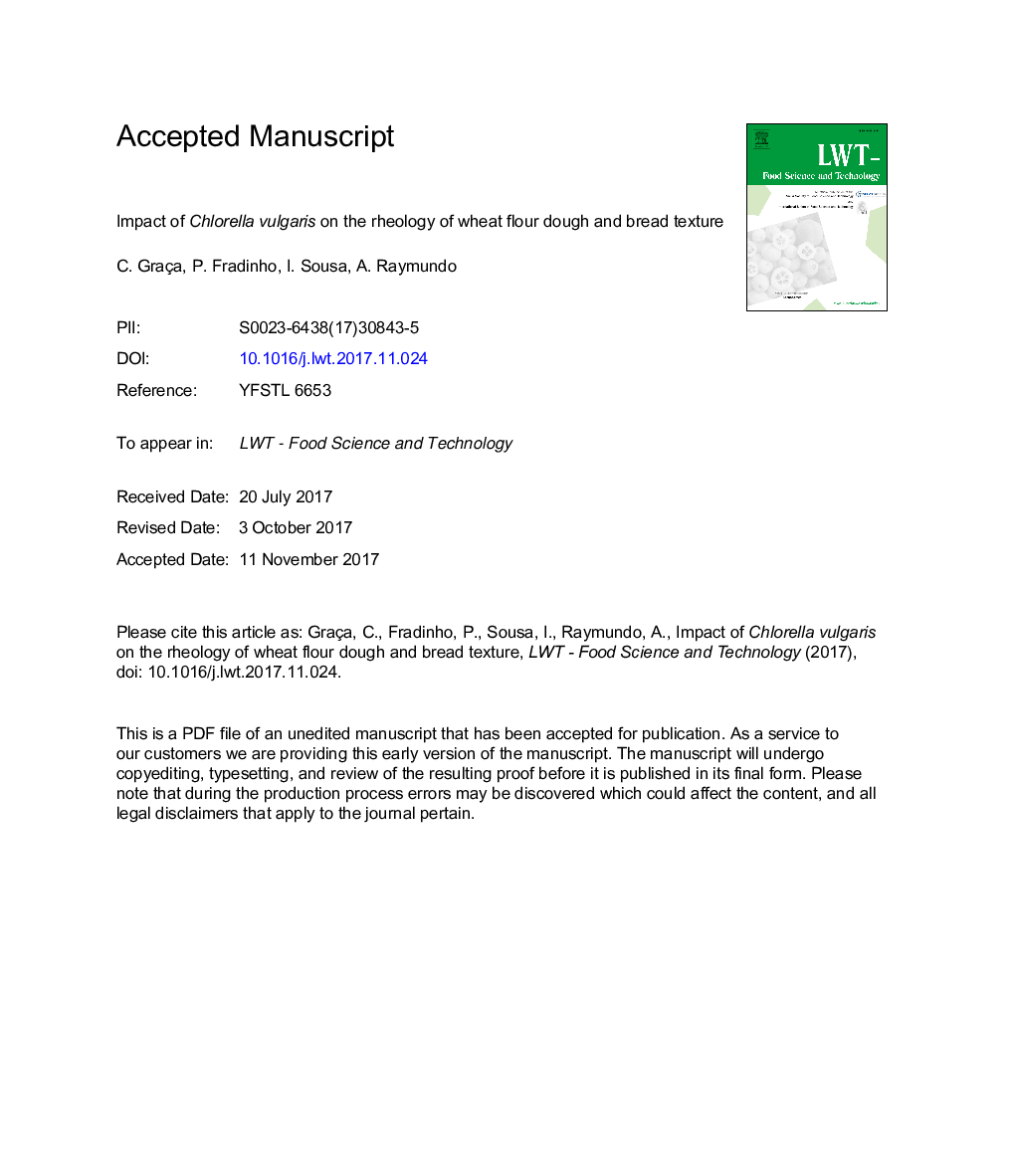| Article ID | Journal | Published Year | Pages | File Type |
|---|---|---|---|---|
| 8892017 | LWT - Food Science and Technology | 2018 | 30 Pages |
Abstract
Modern foods lead to healthier, cheaper and more convenient products to increasingly demanding consumers. Microalgae are an enormous biological resource, representing one of the most promising sources for new products and applications and can be used to enhance the nutritional and technological value of food products. The enrichment of bread with microalgae biomass is a great challenge resulting from its impact on the development of the gluten structure. The addition of Chlorella vulgaris in a wheat flour dough was studied, to evaluate its influence on the dough rheology and bread texture. Microalgae contents from 1.0 to 5.0Â g per 100Â g of wheat flour were tested and it was observed that up to 3.0Â g of microalgae biomass addition, a positive impact on dough rheology and viscoelastic characteristics, with strengthening of the gluten network, was observed. For higher microalgae content, a negative effect on dough rheology, bread texture and flavor was noticed and an acceleration on bread aging was relevant. No impact on the kinetics of yeast fermentation, neither on the time required for fermentation, was induced by the biomass addition.
Related Topics
Life Sciences
Agricultural and Biological Sciences
Food Science
Authors
C. Graça, P. Fradinho, I. Sousa, A. Raymundo,
